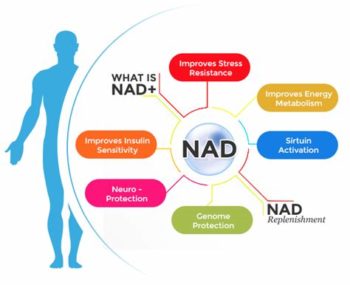
How to Optimize ATP Levels & Mitochondrial Function
Compromised mitochondrial function and the resultant deficit in ATP production is rampant in modern society.
Sub-optimal levels of these conditions are also rampant – often in individuals who would appear to be in a state of good to excellent health.
There are of course many reasons for this state of affairs: age related decline is a given but other stressors such as environmental toxins (including not only chemicals and heavy metals but also factors such as EMF radiation, exposure to blue light, disrupted circadian rhythms, diet, lack of exercise etc.), stress, hormonal dysregulation, and many more.
I would suggest that there is another cause to this challenge: deteriorating age related NAD+ levels.
This latter consideration of sub-optimal mitochondrial function has been something we were not expecting as we have started to get feedback from many practitioners who have been personally consuming our Pricera NAD+ precursor formulation.
Many of these individuals are in apparent good to excellent states of health however within 24-72 hours of starting on Pricera they felt a surge of energy (Pricera’s impact on mitochondrial function), they felt an urge to engage in strenuous exercise, they did so, recovered quickly and felt motivated to engage in exercise again.
An article from the Alive by Nature website discusses a recently published study in Cell Reports in which Jing and co-authors utilized a library of 2,400 drugs to screen for drugs that could restore ATP levels. They successfully identified 15 drugs, influencing a variety of metabolic processes, which significantly increased ATP levels.
Of these, the strongest impact on the production of ATP was NAD+.
The researchers demonstrated that NAD+ activates a transcription cascade that results in
increased expression of mitochondrial proteins involved in ATP production.
I have included the highlights and abstract from Jing’s study at the end of this article.
Jing’s study contributes to a growing body of published research confirming the fact that optimal NAD+ levels are critical for mitochondrial function.